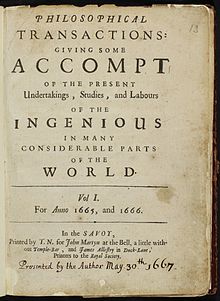Diamond open access
Diamond open access refers to academic texts (such as monographs, edited collections, and journal articles) published/distributed/preserved with no fees to either reader or author.[8] In Western Europe and North America, direct ownership of journals by academic communities and institutions started to wane in the 1950s.[9][10] Between 1950 and 1980, the new model of large commercial publishers came to dominate numerous fields of scientific publishing in western countries:[11] The small society presses, struggling to cope with growing scale, were supported and then largely supplanted by the 'Big 5' commercial presses: Elsevier (which acquired Pergamon in 1991), Wiley, Springer, Taylor & Francis and Sage.[3]This transformation had wide-ranging consequences over the way scientific journals were managed, not only at the economic but also at the editorial level with an increased standardization of publishing norms, peer-review process, or copyrights.Yet it was neither global nor general, and communal forms of journal ownership and management remained significant in large geographic areas (like Latin America) and in several disciplines, especially in the humanities and the social sciences.So for three years the journal will be what Marie Farge (who has worked very hard for a more rational publication system) likes to call diamond open access, a quasi-miraculous model where neither author nor reader pays anything".[24] In 2013, Fuchs and Sandoval published one of the first systematic definition of diamond open access: "Diamond open access Model, not-for-profit, non-commercial organizations, associations or networks publish material that is made available online in digital format, is free of charge for readers and authors and does not allow commercial and for-profit re-use."[25] This definition is associated to a controversial stance against the leading definition of gold open access: "We argue for differentiating the concept of Gold Open Access Publishing because Suber and others mesh together qualitatively different models, i.e. for-profit and not-for-profit ones, into the same category, whereas others, especially policy makers, simply forget or exclude not-for-profit models that do not use author fees or reader fees.[33] Similarly, Janneke Adema and Samuel Moore have proposed to "redefine the future of scholarly publishing in communal settings" through a "scaling small" that ensure the preservation and development of diverse editorial models.[41] In relative terms, the diamond model is especially prevalent in Latin America, with 95% of open access journals registered in DOAJ, and in Eastern Europe (81%).In contrast with Western European and North American countries, the open access movement in Latin America was largely structured around publicly supported platforms like Redalyc, or Scielo rather than APC-based publishers: The Latin American region, as a result, owns an ecosystem characterized by the fact that "publishing" is conceived as acts of "making public", of "sharing", rather than the activity of a profit-driven publishing industry (...) Latin American academic journals are led, owned and financed by academic institutions."[41] Latin American journals have long been neglected in the main commercial indexes, which may have encouraged the development of local initiatives.There is a danger that Diamond open access publishers' interests are overlooked and that a corporate model of OA will shape the future of academia.[29] Support to open access publishing would now be conditioned on the adherence of a series of editorial and economic standards which Diamond journals may struggle to conform to, given their limited means.The 2021 UNESCO recommendation for Open Science calls for "supporting not-for-profit, académie and scientific community-driven publishing models as a common good".[73] In March 2022, an Action Plan for Diamond Open Access has been published with the support of the cOAlition S, Science Europe, OPERAS and the French National Research Agency.





open accessDirectory of Open Access JournalsSciELORedalycscholarly databasesWeb of ScienceScopushigh-income countriesopen sciencecOAlition SThe Philosophical Transactions of the Royal SocietySecond World Warknowledge commonsOpen Journal Systemsarticle processing chargeROMEO projectHarnadPeter SuberTom WilsonMarie FargeCost of KnowledgeTimothy GowersForum of MathematicsCambridge University PressMartin Paul EvecommonsPublic Knowledge ProjectPlan Speer reviewElsevierSciFinderLatin AmericaEuropeEastern EuropeOpenEdition JournalsOpen Journal SystemfreemiummonographsCLOCKSSInternet ArchivecOAlition-SUNESCOFrench National Research AgencyTheGuardian.comHistoryTimelineGratis versus libreSubscription business modelSubscribe to OpenPaywallCopyright transfer agreementAcademic journalScientific journalManuscriptPreprintPostprintPredatory publishingBudapest Open Access InitiativeBerlin DeclarationBethesda StatementDurham StatementGeneva DeclarationNIH Public Access PolicyResearch Works ActSelf-archivingOpen-access mandateOpen-access repositoryHybrid open-access journalDelayed open-access journalThe Cost of KnowledgeCreative CommonsDirectory of Open Access BooksInitiative for Open CitationsOpen Access Scholarly Publishing AssociationOpenAIREOpen Archives InitiativeOpen Knowledge FoundationOpen Society FoundationsPublic Library of ScienceRegistry of Open Access RepositoriesScholarly Publishing and Academic Resources CoalitionSci-HubAustraliaAustriaBelgiumCanadaDenmarkFranceGermanyGreeceHungaryRepublic of IrelandNetherlandsNew ZealandNorwayPolandPortugalRussiaSouth AfricaSwedenUkraineAccess to Knowledge movementAccess2ResearchList of open-access journalsOpen contentOpen dataOpen educationOpen governmentOpen hardwareOpen knowledgeOpen sourceFree cultureCommons-based peer productionCrowdsourcingOpen collaborationOpennessParticipatory cultureSharismCitizen scienceAccessNotebook scienceResearchScience dataFree contentOpen communicationContent